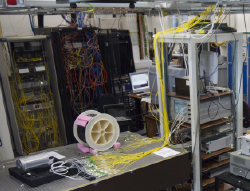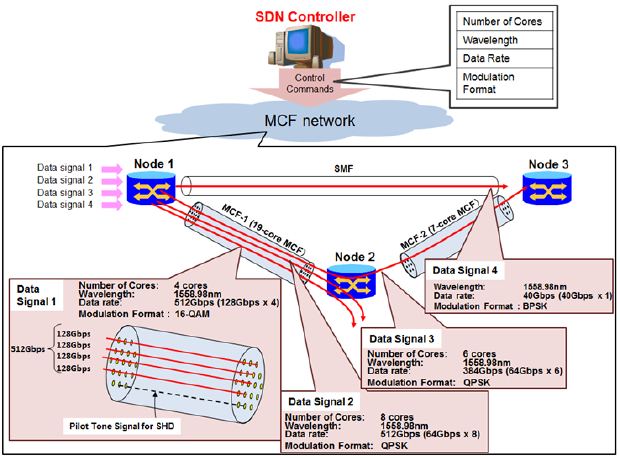The National Institute of Information and Communications Technology (NICT, President: Dr. Masao Sakauchi) in collaboration with the University of Bristol of United Kingdom has demonstrated successfully for the first time a dynamically controlled multicore fiber based network. The research relies on Space Division Multiplexing (SDM) provided by the multicore fibers and on Software Defined Networking (SDN) control, which are considered promising solutions to fulfill and control the ever-increasing demand for data consumption in communication networks.
While multicore fibers and associated optical components have been intensively investigated as key components for SDM in recent years, only little effort has been put so far into addressing challenges that arise when controlling optical networks composed of multicore fibers. This work represents the first successful demonstration of a fully functional multicore fiber network taking advantage of the flexibility and intelligence that SDN can offer in order to provide services to emerging Internet applications. As such, the implemented OpenFlow interface dynamically configures the node in a way that the network can deal more effectively with specific traffic requirements such as bandwidth and QoT (Quality of Transport). With the growing popularity of OpenFlow, this demonstration is believed to bring multicore fiber networks one big step closer to their practical realization. The results of the demonstration were selected for presentation as a prestigious post-deadline paper at the European Conference and Exhibition on Optical Communication (ECOC) 2013 in London on September 26, 2013.




























